Economic Equality Caucus
which advocates for economic equality across the USA.
| Home | Organizational Structure | State Coordinators | Executive Director | Caucus Articles | Memberships | |||||
| "Delta Vision, Delta Voices" | ||||||||||
|
Help Advocate for Economic Progress and Equality. Donate to the Delta Caucus/Economic Equality Caucus. |
||||||||||
Delta Grassroots Caucus Events

Credit Michael Hibblen/ KUAR News, Arkansas Public Radio; Former President Bill Clinton speaking to the Delta Grassroots Caucus on May 2, 2013, at the University of Arkansas Clinton School of Public Service, Little Rock
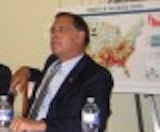
U. S. Senator John Boozman, Arkansas, at a Delta Grassroots Caucus meeting at the US Capitol
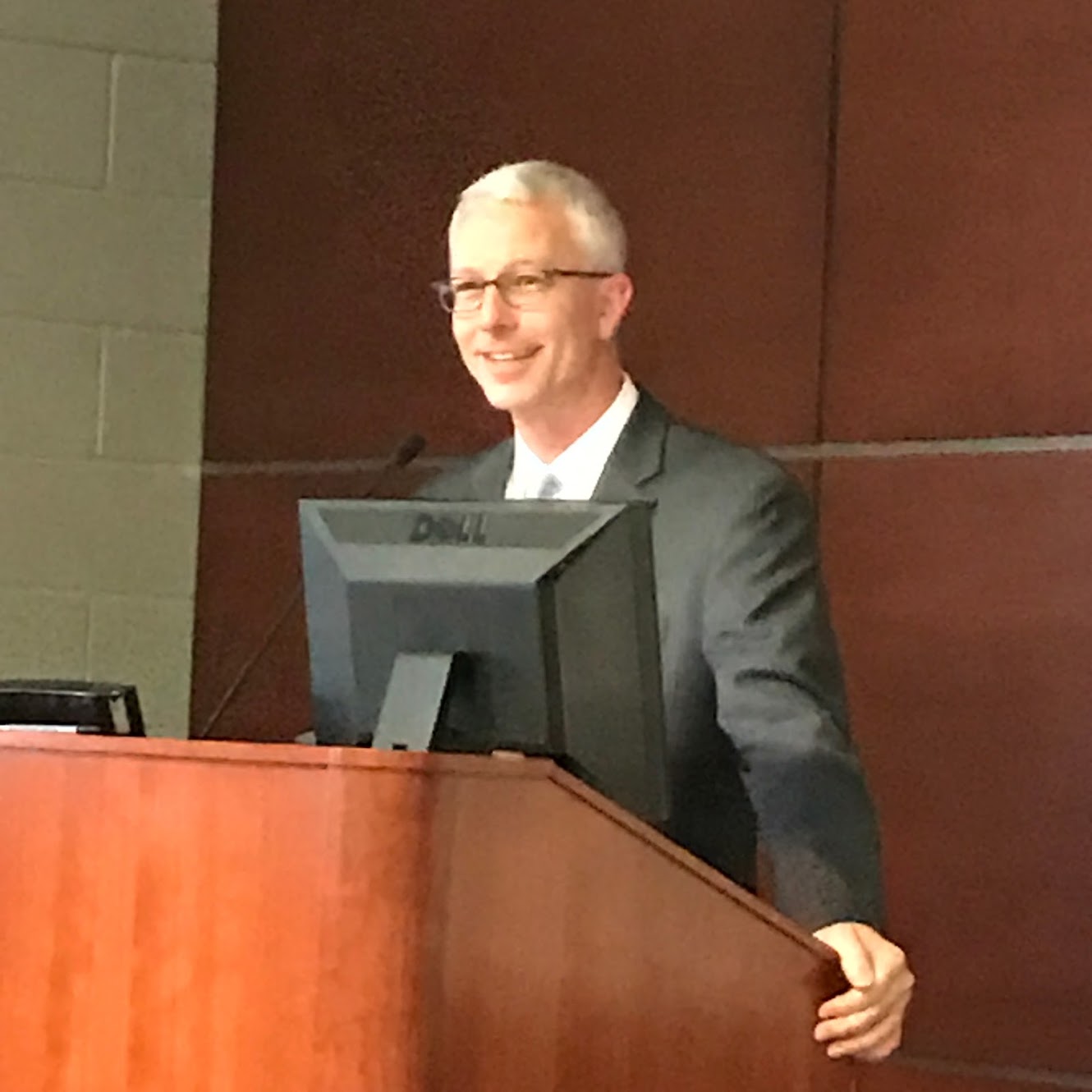
Brad Cole, Executive Director of the Municipal League of Illinois; previously a senior aide to former Republican US Sen. Mark Kirk of Illinois, earlier Mayor of Carbondale, Illinois, veteran Delta regional advocate, speaking at the Delta regional conference in West Memphis, Arkansas on April 26, 2019.

President Bill Clinton makes a comment to Delta Caucus Director Lee Powell at a meeting in Blytheville, Arkansas (in the northeast Arkansas Delta) on Nov. 2, 2014

The Delta Caucus would like to pay tribute to the late, great U.S. Sen. Thad Cochran of Mississippi, a powerful force in the US Senate for decades and a champion for the Delta. Sen. Cochran passed away on May 30, 2019. He spoke to the Delta Caucus on many occasions over the years (he is pictured above speaking to a Caucus event on Capitol Hill in Washington, DC) and his thoughtful, courteous and bipartisan leadership will be sorely missed.
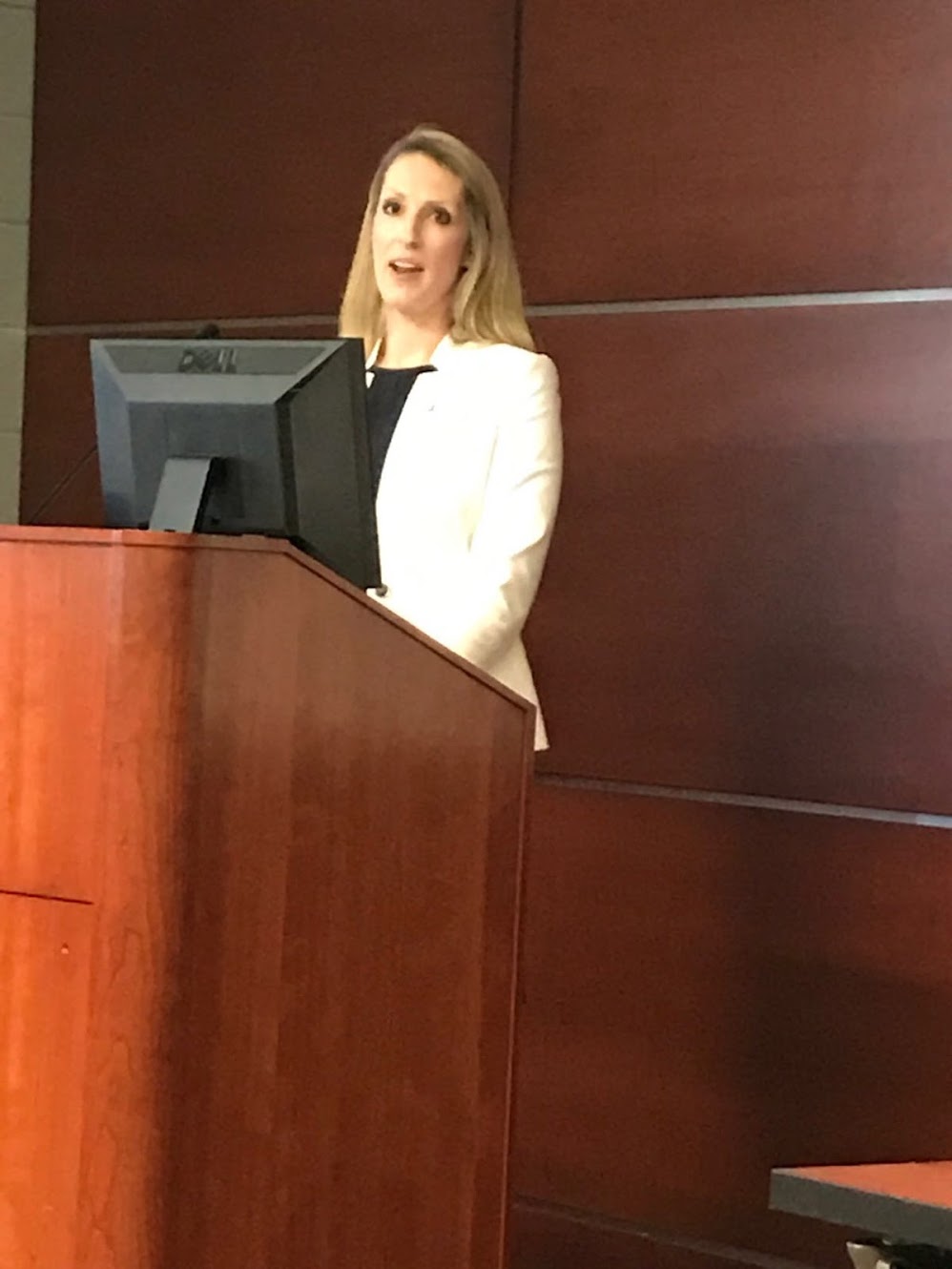
Marcie Lawson, Executive Director, Sikeston, Missouri Regional Chamber and Area Economic Development Corporation, speaking at the Delta regional conference in West Memphis, Arkansas on April 26, 2019.
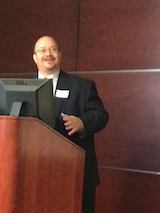
Alan Gumbel, Greater Memphis Alliance for a Competitive Workforce, Memphis, Tennessee, speaking at the Delta regional conference in West Memphis, Arkansas on April 26, 2019.
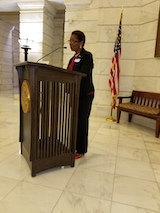
Mayor Shirley Washington of Pine Bluff, AR, speaking to the Delta Caucus at the Arkansas Capitol Rotunda in 2017.
"An In-Depth Report on the Progress of the Delta Regional Authority"
Posted on September 24, 2007 at 10:25 AM
We would like to review the impressive progress the Delta Regional Authority has made since its early, more difficult years from 2001-04, when the budget fell to only $5 million, to the current level of funding channeled to the region through the DRA from several different sources in the range from approximately $20 million to $25 million in this year’s Congressional appropriations. The final amount will depend upon whether the Senate figure of $12 million or the House figure of $6 million prevails in the energy and water appropriations bill. We continue pushing for the Senate figure, and we believe it is likely that either the full Senate amount or closer to it will prevail.
The credit for this progress from a ballpark of $5 million to a range in the neighborhood of $25 million should go to many sources: the Congressional delegation from the eight Delta states, the governors and state governments, the small but highly dedicated DRA staff, and last but not least, the many mayors, county officials, and other elected local officials, nonprofit foundations, businesses, universities and colleges, faith-based organizations, private businesses and other local leaders throughout the eight-state, 240-county region of more than nine million people. I cannot emphasize enough how much we ought to thank the many grassroots leaders who have been so active in the Delta Grassroots Caucus.
First we will give an executive summary of a little over one page, and then for those who would like a much more detailed report, that follows.
Executive Summary
The credit for the DRA’s progress from a ballpark of $5 million to a range in the neighborhood of $25 million should go to many sources: the Congressional delegation from the eight Delta states, the governors and state governments, the small but highly dedicated DRA staff, and last but not least, the many local mayors, county officials, and other elected local officials, nonprofit foundations, businesses, universities and colleges, faith-based organizations, private businesses and other local leaders throughout the eight-state, 240-county region of more than nine million people. I cannot emphasize enough how much we ought to thank the many grassroots leaders who have been so active in the Delta Grassroots Caucus.
The DRA of course still has room for improvement and we support all efforts to scrutinize their work and give them constructive criticism and feedback.
Key points on the DRA’s progress thus far in its history:
Annual funding for the DRA will be determined this fall by Congress, with the best results being: $12 million in energy and water, $2 or $3 million channeled through USDA Rural Development, and $8 to $10 million in transportation projects to the DRA area, as explained below. The best results would be $25 million, but even a more disappointing total would still be approximately $20 million, which is far greater than the $5 million range at the low point in approximately 2003-04.
I will never forget that in late 2004 and as late as January, 2005, there were knowledgeable Appropriations Committee and other sources on Capitol Hill who were apprehensive that the DRA budget would be cut all the way down to $1 million or perhaps even be abolished. Look how far we have come since then!
To this range of $20 to $25 million, we should always emphasize that the Delta Doctors Program has placed about 60 doctors in underserved areas of the Delta without one dime of additional appropriations.
The leveraging achieved through the DRA federal grant program from the energy and water appropriations bill, currently at $12 million and we hope Congress keeps it at least that much in this year’s decisions. Look at these results: In its first five years, the DRA used $48.5 million in federal funds to leverage $213 million in other federal funds and $493.4 million in private sector funding for a total investment of $754.9 million.
RESULTS–This investment leads to a result of 31,000 jobs created and/or retained, over 24,240 families with new water and/or sewer service, and more than 6,235 people with job training in their local area. These figures are as of approximately a year ago, so this year’s funding will obviously increase them. The DRA gets good results from the small funding they have had.
By law, 75% of the funding has to go to economically distressed counties, and 50% has to go for transportation and basic infrastructure. On both counts, the DRA surpassed the statutory requirements–70.55 % went to transportation and basic infrastructure. An impressive 94.83% of the funding was devoted to economically distressed counties.
The DRA funding has a built-in multiplier effect, because the federal funds can be used as the local match, through a rare statutory power that the DRA has. This has opened doors that were previously closed to small, impoverished communities who could not afford the local match, and therefore missed out on major funding opportunities of a much larger amount.
I well recall that Governor and then President Bill Clinton would always tell us to stress that any report was a “handbook for action” and NOT another academic tome. The Delta’s been studied to death, and we need action, not professors’ treatises.
Since as a Presidential appointee in the Clinton administration I was the editor of the Clinton administration’s report on the Delta published at the White House conference on the Delta in Washington, DC in May, 2000 (Delta Vision, Delta Voices: The Mississippi Delta Beyond 2000), I would be the first to acknowledge that at lengthy, periodic intervals, it is worthwhile to publish a handbook for action that measures where we have made progress, where we need to improve, and makes specific recommendations on what policies and initiatives ought to be funded and implemented. People from the DRA, in Congress, and grassroots leaders have told me that they gained some beneficial information and refer to it at times even today. We turned over a part of that report to governors, Members of Congress, and grassroots groups to put down their own recommendations in their own words.
The 2000 report was useful, and every eight to ten years or so we should do an update, but the DRA should focus on practical action and should not be a think tank turning out academic studies. Federal Co-Chair Pete Johnson and Alternate Federal Co-Chair Rex Nelson, who are President Bush’s appointees, have wisely recognized this and the agency is squarely focused on action under their very fine leadership.
Communications and general advocacy–the DRA disseminates useful information all the time. The Healthy Delta program is a good example of this. This is a response-oreinted media and community-based outreach and education program that disseminates information on a regular basis on health issues in general, and particularly diabetes, which has reached epidemic proportions in many parts of the region–almost 10 percent of the residents have diabetes. They have a toll-free number at 1-866-602-3300 staffed by diabetes specialists. In a move demonstrating their sensitivity to the rapidly growing Hispanic population in the Delta, they are also equipped to help Spanish-speaking callers. Rex Nelson does a particularly good job on communications in the region.
Supporting the DRA should become one goal that Republicans, Democrats and Independents can join together in promoting our region’s progress. The DRA over time will be a major unifying force for the Delta. We believe that the DRA does good work on a diverse series of fronts, and over time we will work at keeping people better informed about that.
The low point in the DRA’s funding occurred in 2003 and 2004, when the budget fell to only $5 million. Faced with a small budget, a tiny staff and asked to tackle the massive problem of poverty in the Delta, the DRA indeed have some problems in its first few years. But we need to ask, what new, fledgling agency would not have had growing pains in its early years, under such severely difficult circumstances.
There is no doubt that the DRA has improved tremendously over the past three or four years in all phases of its activities, including its budget, financial management and accountability, communications with the Congress and the general public, long-range planning, and advocacy for the region. This year the DRA funding streams are likely to include $2 or $3 million to the Delta channeled through Rural Development, $8 to $10 million in transportation projects, and the energy and water appropriations bill that contains the basic budgets for the regional economic development commissions, which is likely to be either the Senate figure of $12 million or close to it. Even the lower end of the funding outcome would be in the range of $20 million, with a result closer to $25 million being more likely.
We believe it should be much larger than $25 million–Appalachia and Alaska get sources that are far greater–but when you look at the increase from $5 million to $25 million, it is definitely headed in the right direction. Above all, we need to remember that only a few years ago, we were hearing from the budget-cutters in Washington, DC that the DRA might be cut further down to $1 million or even abolished. The stalwart and vocal advocacy of our many grassroots advocacy was certainly one of the key forces in transforming the debate from zero to $1 million at the low point to today’s range of $20 million to $25 millio–and that does not even include the Delta Doctors Program that has placed 60 doctors in the region who would not have been there otherwise.
PLEASE CONTINUE TO URGE YOUR MEMBERS OF CONGRESS TO VOTE FOR THE $12 MILLION SENATE LEVEL IN THE ENERGY AND WATER BILL–THIS WILL BE DECIDED THIS FALL IN THE HOUSE-SENATE CONFERENCE.
When the DRA legislation was sponsored by a bipartisan group of Members of Congress led by Rep. Marion Berry (D-AR), Sen. Blanche Lincoln (D-AR), Sen. Thad Cochran (R-MS), Sen. Trent Lott (R-MS) and signed into law by President Bill Clinton, the original budget was envisaged at $30 million. It is still authorized at that amount.
But Appalachia has received literally billions of dollars over the years through Appalachian Regional Commission, and even Alaska has received close to a billion. This disparity is grossly unfair and the next President of the United States, whoever he or she is, needs to end this injustice to the Delta region.
I have probably focused too much of our attention to the energy and water bill, which is the largest single part of the DRA funding, but there are many other important phases of their activity as well. Here we will break down their activities into several of their major categories:
The leveraging achieved through the DRA federal grant program from the energy and water appropriations bill, currently at $12 million and we hope Congress keeps it that way in this year’s decisions. Look at these results: In its first five years, the DRA used $48.5 million in federal funds to leverage $213 million in other federal funds and $493.4 million in private sector funding for a total investment of $754.9 million.
This investment leads to a result of 31,000 jobs created and/or retained, over 24,240 families with new water and/or sewer service, and more than 6,235 people with job training in their local area.
The DRA funding has a built-in multiplier effect, because the federal funds can be used as the local match, through a rare statutory power that the DRA has. This has opened doors that were previously closed to small, impoverished communities who could not afford the local match, and therefore missed out on major funding opportunities of a much larger amount.
At least 75 percent of this funding has to go into economically distressed counties. The Senate this year quoted a report from the General Accounting Office in 2006 stating that the DRA led the nation with its rural investment intensity, as 77 percent of its federal grant program went into rural areas in the Delta.
By law, at least half the federal grant program has to go toward transportation and public infrastructure.
In recent years the DRA has added additional projects through Rural Development to the DRA region, which are approximately $3 million. DRA administer this money, funding projects in each state with the state USDA Rural Development director. The DRA also uses part of this funding for region-wide planning such as the Delta Development Highway System and the Delta information technology plan. This money goes through DRA and the agency spends it in accordance with Rural Community Assistance Program (RCAP) regulations. This is also a very important activity of the DRA. (This funding is over and above what would normally go to the Delta states through Rural Development.)
The Delta Doctors program has placed 60 doctors in the Delta who would not be there without this program. This is an exemplary program as far as getting a bang for the buck, since it involves not one dime of additional appropriations. There is tiny cost in the staff time spent on it. This is a great example of how an innovative idea can produce results without costing the taxpayers money.
This program is a testament to the power of ideas and innovative thinking. Foreign medical school graduates previously had to return to their home countries after graduation, but the DRA has acquired the authority to grant waivers for the J-1 visas. The foreign medical graduates agree to serve at least three years in a designated medically-underserved area of the Delta. The physician must provide primary care or their specialty field of service for 40 hours a week, and they must treat Medicare, Medicaid and the indigent.
The DRA assures that the foreign medical graduate is not taking a job away from an American doctor, because each local facility must prove that they tried to recruit an American doctor for at least six months on national, state and medical school levels, but were unable to do so. The DRA makes periodic site visits to the facilities and physicians. The DRA should be commended for its superb Delta Doctors Program.
As far as directing funding into the DRA region that would not be there if the DRA did not exist, we should include the 2005 omnibus legislation that put $25 million into transportation projects in the region. The Federal Highway Administration (FHWA) and the DRA cooperated on this. SAFETEA-LU has up to $10 million for each of 4 fiscal years, and the state departments of transportation and the FHWA have the main ability to decide the details of which projects are funded. But the point is that the legislation requires that these funds be spent in the DRA region. If it were not for the existence of the DRA, it would have been exceedingly difficult or impossible for them to make that requirement.
Why is it the case that these additional transportation funds would not go to the DRA region if the DRA did not exist as an agency? Think about it a minute–some people have said “Well, gee, they could have required that the funds be spent in the eight Delta states.” Nope Sherlock, that would not have accomplished much, because if you just require it to be spent in those states, it would be easy to see that most of it would go to areas in nothern Illinois, northern and western Missouri, eastern Kentucky, eastern Tennessee, western Alabama and even in westerrn Arkansas and Lousiana and eastern Mississippi that are a long way from the real Delta.
Also, Members of Congress from states adjacent to the eight Delta states could easily have asked to be added, thus further diluting and complicating it.
Other people have speculated that “Well, they could have listed all 240 counties in the legislation requiring the transportation funding be spent in the region.” Aside from being cumbersome and very unlikely, you would get many adjacent counties complaining why they were left out. If you have the mechanism of the existing DRA to cite, you have legislation that has already been passed by Congress, signed into law by the President, and funded for six years now with a growing track record of accomplishments. In addition, you have the facility and brevity of just mentioning the DRA region.
If the DRA did not exist, they would not have been able to put that simple, brief language in the legislation stating that that funding had to go somewhere in the DRA region.
The Appalachian Regional Commission did a great job of getting funding from multiple sources, and now the DRA is following suit. So, in our communications and informational efforts, the Caucus needs to cite these three sources of funding and the Delta Doctors Program, as well as other beneficial activities of the DRA, to get away from the tunnel-vision focus on the energy and water appropriations bill. This will be an important step forward in informing people about the many good activities the DRA does for the people of the Delta.
Planning and advocacy–the strategic plans and advocacy are very important, especially in the strategic plan that the DRA first developed in 2002 and is now working to update. The $18.5 billion Delta Development Highway System plan for completion of the Interstate 69 corridor and many other regional transportation improvements, the information technology plan, and other plans intended to be a spur toward action. Federal Co-Chair Pete Johnson was especially wise this year to stress that the highway plan was aimed at generating action, and not just another “study”–we all know how everybody hates it when somebody comes up with another academic study that says “gee whiz, there’s a lot of poverty in the Delta.” Yep, we noticed that already, tell us something new.
The Interstate 69 Corridor was designated a “Corridor of the Future�? by the US Department of Transportation in September, 2007, and this should place I-69 in a solid position to gain greater funding from now on.
I well recall that Governor and then President Bill Clinton would always tell us to stress that any report was a “handbook for action” and NOT another academic tome. The Delta’s been studied to death, and we need action, not professors’ treatises.
Since as a Presidential appointee in the Clinton administration I was the editor of the Clinton administration’s report on the Delta published at the White House conference on the Delta in Washington, DC in May, 2000 (Delta Vision, Delta Voices: The Mississippi Delta Beyond 2000), I would be the first to acknowledge that at lengthy, periodic intervals, it is worthwhile to publish a handbook for action that measures where we have made progress, where we need to improve, and makes specific recommendations on what policies and initiatives ought to be funded and implemented. People from the DRA, in Congress, and grassroots leaders have told me that they gained some beneficial information and refer to it at times even today. We turned over a part of that report to governors, Members of Congress, and grassroots groups to put down their own recommendations in their own words.
The 2000 report was useful, and every eight to ten years or so we should do an update, but the DRA should focus on practical action and should not be a think tank turning out academic studies. Federal Co-Chair Pete Johnson and Alternate Federal Co-Chair Rex Nelson, who are President Bush’s appointees, have wisely recognized this and the agency is squarely focused on action under their very fine leadership.
Communications and general advocacy–the DRA disseminates useful information all the time. The Healthy Delta program is a good example of this. This is a response-oriented media and community-based outreach and education program that disseminates information on a regular basis on health issues in general, and particularly diabetes, which has reached epidemic proportions in many parts of the region–almost 10 percent of the residents have diabetes. They have a toll-free number at 1-866-602-3300 staffed by diabetes specialists. In a move demonstrating their sensitivity to the rapidly growing Hispanic population in the Delta, they are also equipped to help Spanish-speaking callers. Rex Nelson does a particularly good job on communications in the region.
Supporting the DRA should become one goal that Republicans, Democrats and Independents can join together in promoting our region’s progress. The DRA over time will be a major unifying force for the Delta. We believe that the DRA does good work on a diverse series of fronts, and over time we will work at keeping people better informed about that.
A Post-mortem Analysis of the Problems in the Period from 2001 to 2004
While we are commending Congress, the DRA staff, the federal executive branch in general, and the grassroots leaders throughout the region and others for the progress of the agency since the low point of about 2003-04, we should also acknowledge that there were plenty of problems among all those actors in the earlier period. The Delta Grassroots Caucus severely disagreed with the Bush administration’s budget cuts from 2001 to 2004, and obviously Congress was either unwilling or unable to stop those cuts when President Bush was more powerful and popular than he is today. At the nadir, the Bush administration request fell to a pathetic $2 million.
In fairness to the Bush administration, they did finally halt the cuts and went back up to $6 million in their request in early 2005, and that decision meant an end to the talk of abolishing the DRA. While many of the Members of Congress from the delegation went to bat to save the DRA at that time, Senator Thad Cochran, Republican of Mississippi, was chair of the Appropriations Committee at that time and was powerfully situated to back up the DRA. Sen. Blanche Lincoln (D-AR) was also in the forefront of those in the Senate leading the charge for DRA funding, and in fact the Senate has consistently appropriated much larger amounts than the House in recent years, and fortunately in conference the House has gone all the way to the Senate figure of $12 million. We urge that same result this year.
President Bush and his administration also made the very fine appointments of Pete Johnson as Federal Co-Chair of the DRA and Rex Nelson as Alternate Federal Co-Chair. Pete Johnson and Rex Nelson should be commended on a job well done in their work at the DRA.
The Delta Caucus also was not very active in 2001-2002, and during that time I apparently was not very persuasive in urging that we needed to keep active and keep working for the region’s development, to build upon the clear gains we made in the late Clinton administration from about 1997 to January, 2001. Lest we should seem to be blaming everybody but ourselves, we should acknowledge that the grassroots coalition did not do a very good job at that time. Sadly, we failed to stay active as a regional grassroots coalition, and not surprisingly, the funding and the policy initiatives that we fought so hard to establish from 1997 to 2001 lost a lot of ground, not just in the cuts to the DRA budget, but on a series of important regional issues such as health care, rural development, transportation, housing, education, biofuels, and other key economic development issues.
We should learn from that lesson and avoid any future periods when frustration, defeatism and fatalism lead us to stop working assertively for the region’s economic development. We cannot ever afford to give in to the defeatists who take the attitude that “The Delta has always been poor and always will be, and there’s no point in struggling against our sad fate.” That happened in the early 1990s as well. Regional advocacy and lobbying for the Delta is a permanent, ongoing task, and we have to learn from Appalachia’s example–you have to promote and advocate for your region, week after week, month after month and year after year.
But in 2003 we started to rejuvenate the grassroots movement, and the leader who was crucial in helping me to do that was the Hon. Rodney Slater. We started getting more active in 2003, and then in 2004 we got another boost from Dr. Martha Ellen Black, executive director of the Susanna Wesley Family Learning Center and also president of the Southern Empowerment Zone/Enterprise Community Forum, which now has been incorporated into the Delta Grassroots Caucus.
Then we worked with people who had led the 1999 trip to Washington organized by the old “Delta Caucus,” led by Desha County Judge Mark McElroy, former state senator Kevin Smith and aide to Gov. Bill Clinton and Sen. Dale Bumpers Kevin Smith of Helena-West Helena, Peggy Wright of Arkansas State University Delta Studies Center, Mayor Barrett Harrison of Blytheville and many others too numerous to list here. We kept growing on through late 2004 to the present, and the potential for further growth is huge.
There will always be a few critics of an agency that is charged with the monumental task of fighting poverty in a huge region of the country. It is a constant struggle to avoid becoming frustrated or defeatist in promoting economic development in the Delta, because the problems are so severe and have been there for so long. It is also natural that sometimes critics will lash out at the DRA in their frustration with these enormous problems, because as the agency charged with fighting poverty in the region, the DRA is the most visible target and the easiest scapegoat to blame. But some constructive criticism is always helpful, and accountability from the Congress as well as the private sector and grassroots groups is healthy.
We will just keep trying to inform and keep advocating for our region as a broad, grassroots coalition. The problems are severe, and the DRA is just one among many important initiatives that we should be supporting on the range of economic development issues. While we should never sugarcoat how serious the problems still are, there are signs of hope and progress for the Delta. Thanks and keep up the great work! Lee Powell, MDGC (202) 360-6347
Appendix
We would like to include the following statement on the DRA’s most recent activity, regarding a series of hometown health fairs to be held in the coming weeks at several cities in the DRA region.
Sept. 20, 2007
FOR IMMEDIATE RELEASE
CONTACT REX NELSON
(501) 686-6188
The Delta Regional Authority will hold the first in a series of Hometown Health Fairs on Saturday, Sept. 29, from 7 a.m. until 3 p.m. at the Wal-Mart Supercenter at 1815 Highland Drive in Jonesboro, Ark.
The Hometown Health Fairs are part of the DRA’s Healthy Delta initiative, which promotes diabetes awareness and prevention across the Delta region. Free public health screenings will be given at the health fairs. Health educators will be on hand at the health fairs. The first 270 participants at each event will receive screenings for weight, body fat, body mass index, total cholesterol, HDL levels, LDL levels, triglyceride levels and glucose levels. Detailed results will be given to each person who receives a screening. Participants will have a chance to ask questions and receive answers from health professionals at the fairs. Free blood pressure screenings also will be given, and wellness materials will be distributed.
Later Hometown Health Fairs, all of which will be on Saturdays from 7 a.m. until 3 p.m., are scheduled for:
Oct. 13 at the Wal-Mart Supercenter at 1000 S. State St. in Clarksdale, Miss.
Oct. 27 at the Wal-Mart at 1252 S. Eufaula Ave. in Eufaula, Ala.
Nov. 10 at the Wal-Mart Supercenter at 2650 Lake Road in Dyersburg, Tenn.
Jan. 12 at the Wal-Mart Supercenter at 925 Keyser Ave. in Natchitoches, La.
March 15 at the Wal-Mart Supercenter at 450 E. Main St. in Carbondale, Ill.
“These types of health-risk assessments are a great way to understand the health status of the workforce and how existing risk factors affect the bottom line of businesses,” said Pete Johnson of Clarksdale, Miss. , the DRA’s federal co-chairman. “Elite Wellness, a company that specializes in cost containment through risk factor reduction, will conduct the screenings. After the screenings, local business leaders will receive an analysis of the overall state of health for those who participated. This analysis will identify high-risk health concerns in each community and assist these local leaders in taking steps toward developing community wellness plans. Prior to each Hometown Health Fair, we’ll host an event for business leaders so we can explain that we must first improve the health of our workforce if we’re to improve the economy of this region.”
The DRA recently launched television and radio spots aimed at motivating people to call the Healthy Delta diabetes call center at 1-866-602-3300. The spots, which are airing in 13 media markets across the eight states served by the DRA, promote a free diabetes testing kit incentive and encourage those who have concerns about diabetes to contact the DRA for help. The testing kits are being provided by Byram Healthcare, a private-sector partner in the Healthy Delta program.
When a Delta resident calls the toll-free number, a diabetes specialist offers assistance with questions about the disease, gives a diabetes risk test and then helps the caller find a doctor. Callers also are helped with Medicaid questions. The testing kits are valued at $95 each and include blood sugar testing meters, testing strips and lancets.
Those desiring more information can go to www.healthydelta.com.
“Health care is a key component of the DRA’s vision for the Delta because strong, growing communities are built with healthy workforces,” Johnson said. “If a worker isn’t healthy, that worker can’t hold a job, support a family or contribute to the economic growth of the community. When there are health issues that affect workers across a wide geographic area, the entire economy is affected. Not only is diabetes keeping thousands of people from being able to work and support their families, it also can lead to more serious problems such as heart attacks, strokes and even death. The Delta’s economy will never advance if the health of the workforce isn’t drastically improved. Simply put, it’s a quality-of-life issue for the entire region. A healthy workforce is a vital foundation if the Delta is to truly build an economy for the 21st century.”
The DRA is a federal-state partnership that serves 240 counties and parishes in parts of Arkansas, Alabama, Illinois, Kentucky, Louisiana, Mississippi, Missouri and Tennessee . Johnson, who was appointed by President Bush and confirmed by the U.S. Senate in 2001, serves on the DRA board with the governors of the eight states.
In addition to the Healthy Delta program, the DRA operates a highly successful grant program in each of the eight states it serves. This program allows cash-strapped cities and counties to leverage money from other agencies. The DRA also has expanded its regional initiatives in the areas of transportation and information technology.
Back to the top